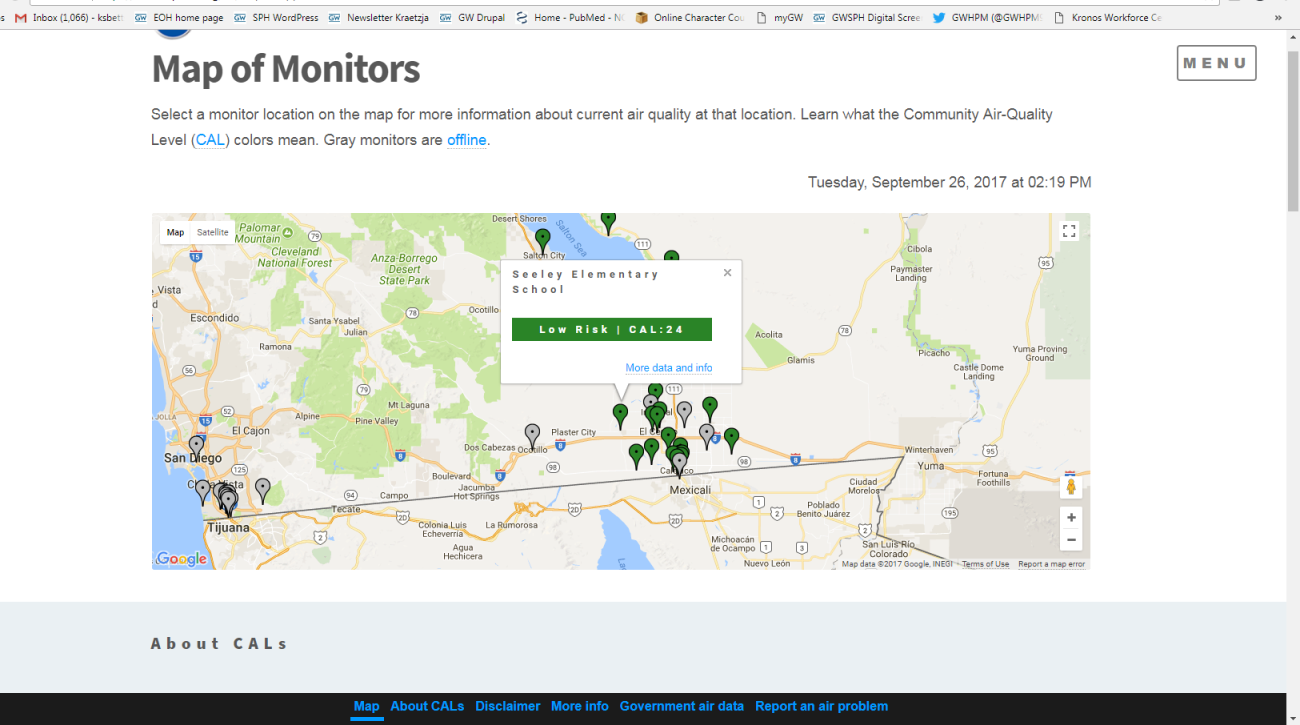Assistant Professor Amanda Northcross loves to teach, is passionate about environmental justice, and really enjoys building things. So she was delighted to be able to combine all three passions when she was asked to help a community in southwestern California adjacent to the Mexican border to create what is now one of the largest community-based environmental monitoring networks in the U.S.
The network monitors the air of Imperial County, which is home to a primarily Latino population (82%) and has some of the nation’s highest rates of unemployment and poverty. Located in California’s southwestern corner at the state’s borders with Mexico and Arizona, it is part of the hot, dry Sonoran Desert that extends into Mexico. Agriculture is one of the county’s main industries; its website boasts that it grows half of our nation’s winter vegetables. Field burning of crops, exhaust from trucks waiting to go through border crossings, unpaved roads, and various industrial facilities contribute to periods lasting over 6 months when the county’s air exceeds California’s standards for particulate matter (PM). The county’s rates of both emergency hospital visits and hospitalizations for asthma among school-age children are much higher than that of any other county in the state.
Northcross, who studied engineering for her B.S., M.S. and Ph.D., has been interested in low-cost air monitors since they hit the market about a decade ago. She previously worked as research scientist at the University of California at Berkeley School of Public Health's Department of Environmental Health Sciences, where she taught introductory environmental science and air pollution monitoring there. So she was an obvious choice to provide technical advice for the network, which was formed to address community concerns about air quality.
Other members of the research team are from the University of Washington, the University of California at Los Angeles, the California Department of Health, the nonprofit Public Health Institute’s California Environmental Health Tracking Program, and a nonprofit group based in Imperial County, Comite Civico Del Valle. Funded by the National Institute for Environmental Health Science’s Research to Action Program, the project used an innovative approach to facilitate community participation and decision-making throughout the network’s development and deployment and to address concerns about scientific validity and sustainability.
Community members played key roles in determining the study’s design, siting and deploying monitors, and data collection. The 40 Dylos DC1700 particulate sensors used in the network cost $425 each, far less than this kind of equipment cost up until very recently. Northcross worked with the team to create boxes with cooling fans to allow the sensors to perform optimally under Imperial County’s harsh summer conditions.
The network is now producing real-time particulate matter data from 40 low-cost sensors throughout the county, and the network provides much more detailed data than that available through the county’s five state-operated monitors. "Thanks to the information from the monitoring network, which can be viewed online, people who live in Imperial County now have much better information about their air quality. This is especially important for children with asthma and their parents," Northcross says.
Northcross and the others in the research team have published two articles about the research project. “The Imperial County Community Air Monitoring Network: A Model for Community-based Environmental Monitoring for Public Health Action” is published in Environmental Health Perspectives. “Development and field validation of a community-engaged particulate matter air quality monitoring network in Imperial, CA” is published in the Journal of the Air & Waste Management Association.


